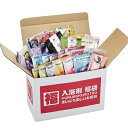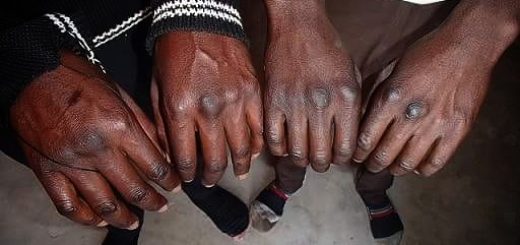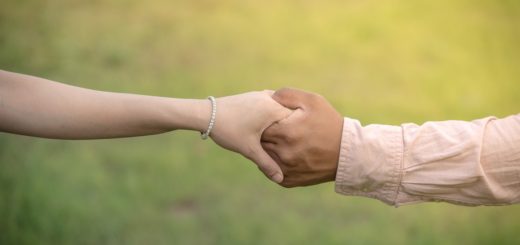Why Japanese Women Don’t Age
Japanese Women Don’t Age?
As I lived in countries outside of Japan, I have occasionally heard the comments below related to Japanese women or received the following questions.
“Asians don’t age”
“How do Japanese women stay young?”
“They don’t have wrinkles”
To be fair, they do get old as everyone else does.
They are just good at taking care of their health. Most importantly, let’s not talk about high-functioning beauty filters here.
This article introduces you what Japanese women do for anti-aging. To save your time, there is an overview at the end of this article.
1. Avoiding sunlight
No sunbathing is essential common sense among Japanese women.
If you mind looking pale, I’d like to recommend you to try a professional spray tanning service instead of sunbathing.
If it’s not affordable, then consider free charge sunbathing at your balcony. However, tanning water would be a necessary item for anti-aging.
It reduces UV (especially UVB light which is more powerful than UVA light) so that you can get tanned with less damage to your skin. Next time, before you go sunbathing, do not forget to apply it.
FYI: What is UV?
Ultraviolet (UV) is electromagnetic radiation with wavelength from 10 nm (with a corresponding frequency of approximately 30 PHz) to 400 nm (750 THz), shorter than that of visible light but longer than X-rays. UV radiation is present in sunlight, and constitutes about 10% of the total electromagnetic radiation output from the Sun – Wikipedia
On the other hand, if you mind being tanned, I’d like you to try a sunscreen when you go out under sunlight for a long time. In fact, many Japanese women apply sunscreen under a foundation in summer.
People always want what they don’t have. It feels good when you eventually obtain what you wanted.
Therefore, I recommended tanning and whitening products, however, most importantly, it is also awesome to be proud of what you already have.
I am so proud of my sharp small eyes because I can fall asleep at the meeting.
2. Healthy diet
Some Japanese traditional foods are very healthy. And thankfully, they are still reasonable, tasty and easily obtainable at any markets in Japan.
・Natto
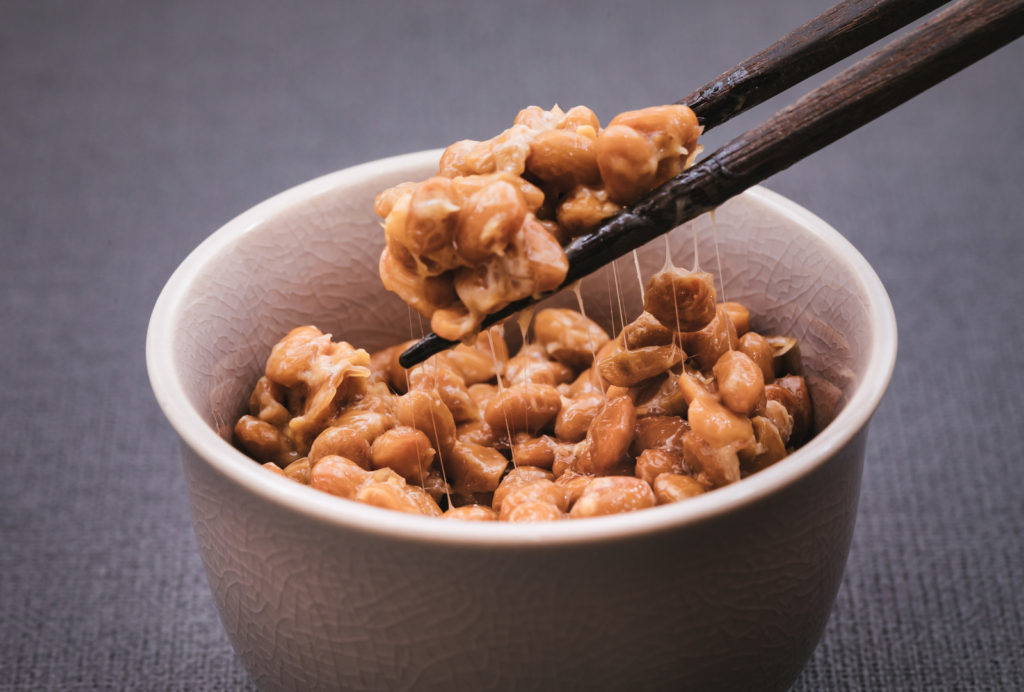
Natto is made from fermented soybeans. Although it is not appreciated by many foreigners due to its smell, it is highly nutritious and contains polyamine, good for anti-aging.
・Kimchi
A Korean food that people in Japan have on a daily basis. Kimchi is made from fermented vegetables, mainly cabbage and radishes. It contains vitamins and lactic acid bacteria, which are good for skin.
・Umeboshi

It is often seen on steamed rice, in a lunch box, or in a rice ball. A piece of umeboshi contains calcium and iron 4 times that of an apple. It contains citric acid 2 times that of a lemon which makes blood flow smooth.
・Miso soup
Miso is mainly made from fermented soybeans with salt and some other ingredient. Miso soup is a soup of miso, bonito broth, seaweed called wakame in Japanese, and tofu. Miso soup contains a certain amino acid that activates the basal layer of human epidermis.
・More fish & less meat
Fish contain omega-3 which are beneficial for health. Studies say that they are effective against depression and anxiety. Raw fish, such as sashimi and sushi, contain them more than fried fish.
FYI: What is Omega-3?
Omega−3 fatty acids, also called Omega-3 oils, ω−3 fatty acids or n−3 fatty acids,[1] are polyunsaturated fatty acids (PUFAs) characterized by the presence of a double bond three atoms away from the terminal methyl group in their chemical structure. – Wikipedia
OMG, Omega is On My Gut feeling….
Never mind.
・Green tea
A cup of green tea contains catechin, which is good for skin, 3 to 5 times more than a cup of black tea.
・Low sugar
They love sweets but hate sugar. To satisfy both needs, they end up eating low sugar sweets. Many sweet products such as cakes, chocolates and snacks say “Amasahikaeme” on their packages. It means “light sweetness”.
3. Hot bath
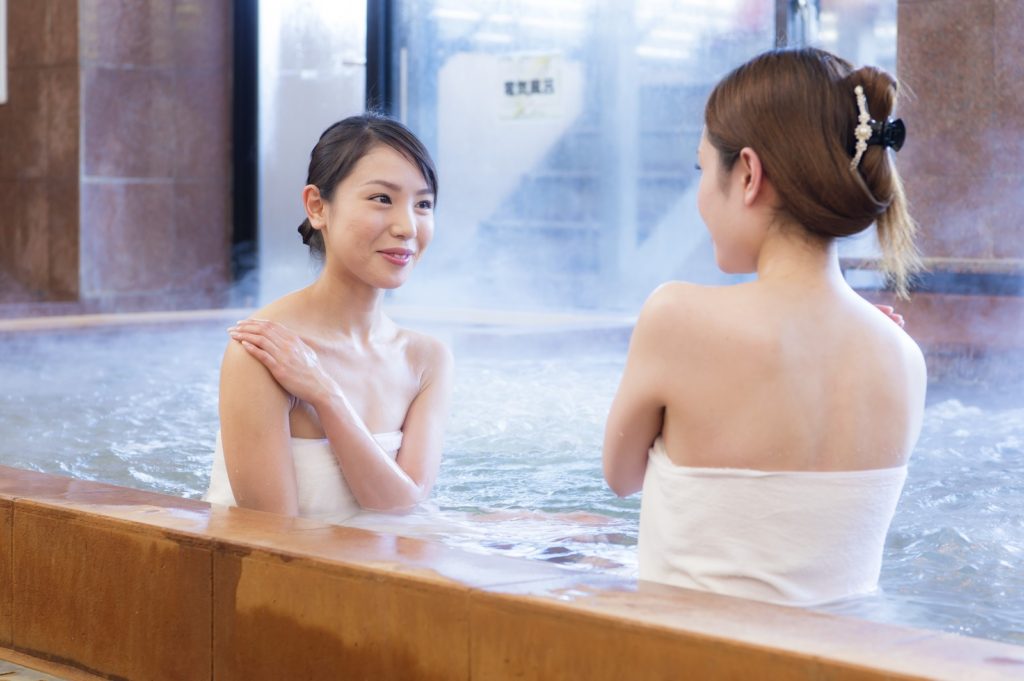
Majority of the Japanese take a hot bath everyday, even in the summer since it is a custom and it makes you warm, sweat, detox and works for good sleep.
In addition to an ordinary bathing, a particular practice in Japan can be Hanshinyoku, which is, you let half of your body stay in water (around 40 degrees celsius) for 20 to 30 mins. Let’s say a half-sauna and half-bathing.

In case you are worried, you will not catch a cold as the houses built after 1983 usually have a thermostat that automatically warms the water in a bathtub.
There must be a reheat-button around a bathtub. If not, dump that house. Or get a portable insulated heater.
If you would like to try it in a hot spring called onsen in Japanese, no problem. There are onsen powder products to change your home bath to onsen.
(In case you go to the real onsen…)
4. Drinking water before & after sleep
To drink a cup of water before sleep prevents you from waking up in the middle of night and dehydration (you sweat approximately 500ml to 1,000ml while you sleep).
It results in improving the quality of sleep. Especially, after hanshinyoku, it really works.
To drink a cup of water after waking up works for a diet, because it can reduce the amount of meal, make blood flow smooth which leads to better metabolism.
BTW, I didn’t know it is called “Water Therapy” until now. It’s just a routine for the Japanese. No one does it as a therapy.
5. High quality of sleep
Deep sleep releases more human growth hormone (HGH) than shallow sleep. Study says that HGH is good for anti-aging, therefore, to upgrade the quality of sleep is essential.
While there are many factors of the quality of sleep, the Japanese believe that a quality of a bed/futon directly influences it.
Low-resistance mattresses are the most popular type in Japan because they spread pressure while lying on bed so that you can sleep better. Some famous athletes even brought them to the Olympic camp.
The best brands are probably airweave, Air, or True Sleeper. Personally, I use Air when I stay in Japan, 5 hours of sleep makes me feel like I had 9 hours of sleep when I am overseas.
6. Facial pack
They are so religious that moist skin like a baby’s is the key to look young. Therefore, a facial pack is an inevitable item.
What matters is to choose the best one for your skin.
I asked my married male friends about what facial packs are usually requested by their wives. “Ultimate Mask” is apparently popular.
There are thousands of brands and different components. It may take time to find the right one but as far as I have seen how religiously they use facial packs, it should be worth it.
7. Facial massage
A facial massage prevents wrinkles.
At some point, they start claiming that only “moist skin” is not enough but also “no wrinkles” is required. Therefore, their husbands cannot help but work very hard for facial equipment or therapy.
Personally, the equipment is better.
Once you buy the real one, you won’t have to go to expensive therapy anymore. The real equipment such as Twin Elenizer PREMIUM from EBiS is usually expensive as well, but in the long term it is cheaper.
Please note that there are many fake, cheap equipment online. And they have good fake reviews.
To find out if it’s real or not, you can google blogs where they show an experiment of products.
Overview
- No sunbating
- Use a sunscreen
- Eat more sashimi than steak
- Try traditional Japanese food
- Drink more green tea than black tea
- Reduce the amount of sugar
- Take a hot bath everyday
- Try hanshinyoku
- Use onsen power
- Drink water with an empty stomach
- Sleep on a low-resistance mattress
- Find your best facial pack
- Use facial massage equipment
- Do above all secretly for a while until someone compliments on your skin
- Pretend as if you do nothing like Japanese women
If you are interested in dating the Japanese…



